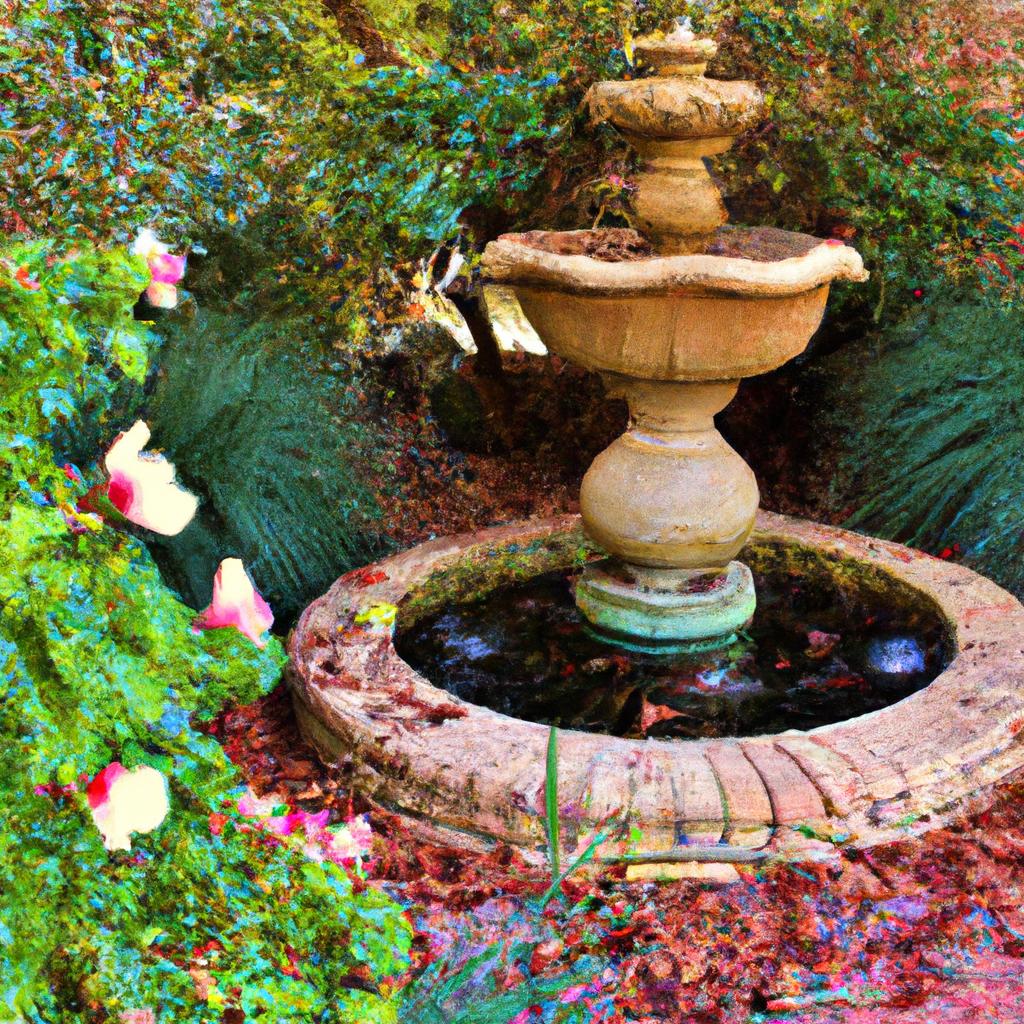Introduction: Overview of Outdoor Garden Design
Outdoor garden design is the practice of creating and maintaining a backyard or outdoor space for leisure, beauty, and enjoyment. It involves planning and constructing a garden layout that considers the homeowner’s lifestyle, aesthetic preferences, and budget. It can involve anything from basic landscaping and patio design to elaborate water features or unique plants.
Garden design inspiration can come from many sources. It could be from visiting gardens of friends and neighbours, looking through images online, attending open gardens, or even just by getting out into nature. With a bit of research and creativity, you can create a beautiful and unique outdoor space for yourself or your family.
This guide will discuss the fundamentals of garden design and offer helpful advice on how to create an outdoor oasis. It will provide design ideas, planting suggestions, budget considerations, maintenance tips and more.
Basic Principles of Garden Design
When it comes to garden design, there are certain principles that can help guide your decisions to create an outdoor oasis. Before getting started, it’s important to consider how you want to use your outdoor space. Are you looking for a cozy place to relax? Or a creative area to entertain? Once you have your purpose in mind, you can begin to plan the layout and style of your garden.
Garden design is all about creating balance. Balance not only with visual elements, but also within the climate, soil, and water resources available. There are three main elements to consider when designing a garden: unity, proportion, and rhythm. Unity is achieved when all of your outdoor elements fit together in a harmonious style. Proportion refers to the ratio of large elements to small elements, as well as the relationship between your garden and the house or other structures. Finally, rhythm ensures that your garden does not become stagnant, but instead has movement and flow from one element to the next.
When planning your garden design, it is important to think about your overall theme. The theme should be cohesive and include complimentary shapes, materials, and colors. It’s ok to mix elements of different styles as long as they work together visually and go back to your original purpose for having a garden. Incorporating native plants and wildflowers into your garden design is also a great way to add interest and biodiversity.
Planning the Layout of Your Garden
Creating an outdoor oasis in your garden space can be an exciting adventure, but it is important to take some time to plan out the layout of your garden. A properly planned garden will ensure that your outdoor area is functional and aesthetically pleasing.
When planning your garden, you will want to consider the size and shape of your garden space, as well as the purpose for which you plan to use the area. For example, if you are designing a garden for relaxing with family, you will want to make sure that there is enough room for seating, while still leaving plenty of space for plants and other décor items. On the other hand, if you are creating a garden space with an outdoor kitchen or alfresco dining area, you will need to plan for counter space and any other necessary amenities.
It is also important to consider the existing elements of your backyard, such as trees, buildings, fences, and decks. You may not be able to change these elements, but you can work around them to create a beautiful garden layout. Additionally, you will want to take note of the direction of the sun, as this will inform the placement of certain plants and other items.
When planning out the layout of your garden, it can be helpful to sketch a rough diagram of the area. This can be as simple as a few stick figures and a few lines, or a more detailed outline. By sketching out your plans ahead of time, you can easily visualize what your garden will look like before any construction begins.
Creating an Outdoor Oasis: Style, Design & Planting Ideas
When it comes to creating your own outdoor oasis, there are a myriad of style and design options available. Whether you’re looking for something classic and timeless, or something more modern and unique, you’ll be sure to find inspiration for your garden project here.
When selecting design elements for your outdoor oasis, consider the size, shape and space available in your garden, as well as your personal taste – what elements would you like to see in your outdoor area? After selecting a theme or concept, consider how the look and feel can be achieved through planting and design elements.
For a modern look, consider sleek lines and minimalistic, geometric shapes, with plants that are contemporary and simple. For a more traditional design, look towards a cottage-style garden or a classic English country garden. This could include the use of climbing plants and vines, winding pathways, sweet-smelling herbs, fragrant blooms, and intricate garden architecture.
The best gardens often marry style and function to create a cohesive and attractive outdoor oasis. Look into low-maintenance solutions such as hardscaping, which can include materials such as stone, wood and metal, or even recycled materials. Include plants that will thrive in your area and are suitable for the conditions of the space.
No outdoor oasis is complete without some comfortable seating for relaxation. Select furniture that suits the style and theme of the garden, and create plenty of inviting nooks and corners for you to enjoy your outdoor area.
Budget Considerations for Garden Design
When creating a garden, budget is always an important factor to consider. Depending on the size of the project, hiring professional services can add up quickly. However, there are many options for DIY garden design that can help keep costs down.
Gardening supplies can come with a variety of price tags, so it is important to be aware of how much money you are willing to spend upfront and over time. Planting perennials and using other hardy plant varieties can help reduce the amount of money spent on replacements.
Home improvement stores provide a wide range of materials at different price points which can help when trying to find the best deals. Reusing items from around the home, such as old bricks and wooden planks, can also be a great way to save some money.
- Look around home improvement stores for materials at different price points.
- Choose perennials and other hardy plants that will last longer.
- Reuse items such as bricks and wooden planks to save money.
Budget plays a large role in any garden design, and keeping an eye on the costs throughout the project will help ensure that everything stays within the desired price range.
Helpful Tips for DIY Garden Design
If you’ve decided to take on the task of designing your outdoor garden, there are a few things that you should keep in mind. First, you should be aware of the environmental conditions of the space and make sure that any plants you select will be able to thrive in the environment. This also means deciding if you want to add heating or cooling elements to the garden in order to help the plants adjust to their environment.
Second, you should plan out exactly what kind of garden design you want and the type of plants you would like to use. Take some time to research the types of plants that will work best in your garden and be sure to consider the best times of year to plant the specific species. Additionally, think about the seasonal changes that you may need to make in order to keep the garden looking its best all year round.
Third, create a realistic budget for the garden. While it is possible to save money by doing much of the work yourself, you should also consider whether or not you have access to the materials, tools, and plants needed to complete the project without overspending.
Lastly, consider hiring professionals to help with certain parts of the design, especially if you don’t have experience in landscaping. Professionals can provide you with the guidance needed to get the job done right the first time.
Professional Help
It’s possible to create an outdoor oasis with the help of a professional garden designer. Hiring a pro will give you access to the latest trends, ideas, and resources that will result in a beautiful and well-thought-out design. Profesisonals understand the principles of garden design and installation that is necessary for long lasting beauty and successful growth.
There are a few key considerations that should be taken into account when thinking about hiring a professional garden designer. It’s important to take into account the cost associated with their services, as these professionals typically have a rate for their time. Also consider their experience and make sure they have expertise working with the size and type of garden you’re looking for. Get references from past clients to ensure you find a quality pro that you can trust.
If you decide to work with a professional, be sure to give them an idea of what your budget is before engaging in any work. You should also communicate your vision and goals that you want to achieve with your outdoor space. This information should be shared upfront so that the designer can better understand the scope of the project.
Creativity and Theme Ideas for an Outdoor Oasis
Having an outdoor oasis to relax in is a dream for many, and there are various different routes you can take if this is what you’re looking to create. Incorporating your style and tastes is key, while also considering the climate and environment of the space you have. Some ideas for the aesthetic of your outdoor oasis include:
- Tropical paradise – Bring the feel of a holiday to your garden with palms, exotic plants, bamboo and bright, vibrant colours.
- Country cottage – Wood furniture, rustic pathways and wildflower meadows bring a warm and inviting feel to your garden.
- Modern minimalism – Bold colours and straight lines give a modern edge, using large planters and low-maintenance foliage.
- Zen and tranquil – Create a calm and tranquil atmosphere with minimal colours and a selection of plants designed to promote relaxation.
When designing your outdoor oasis, don’t be afraid to experiment and think outside the box. After all, it is your own unique space and you have the freedom to design it the way you want. You don’t have to stick to just one theme either and can incorporate bits from all the styles above to make something that truly works for you. As well as choosing plants and furniture to fit your desired theme, you can also experiment with lighting and water features to really bring your outdoor oasis alive.
Reusing Plants and Wildflowers in Your Garden Design
When designing your outdoor oasis, it’s important to consider the cost and sustainability of your plants. Reusing plants from existing gardens or sourcing wildflowers, can be a great way to reduce costs and create a unique garden style.
Wildflowers have the benefit of being native to many areas and are therefore often well adapted to local climates. Transplanting existing wildflowers from other gardens, meadows, or from the wild can be an effective way to build up beds of diverse flowers with minimal effort or cost. If transplanting from the wild, be sure to check that it is legal to collect the plants in your area first.
Flower bulbs of different varieties are a good option for color and brightness in the garden and, when planted, they can easily be moved each season. Bulbs are relatively low cost and are a great way to add abundant colour to any outdoor space.
In addition to buying new plants, reusing plants from other gardens or even dividing large clumps of plants into multiple smaller plants, can allow for more variety in the garden and reduce costs of stocking up on plants.
If you’d like to create a garden with re-used plants but are unsure of how to go about it, you can always consult a professional to help go through the process.
Incorporating Water Features to Enhance Your Garden
Adding a water feature to your outdoor garden design can be an attractive and soothing way to add a unique element. A variety of water features exist ranging from fountains, ponds, and streams, all the way to pools and spas. As you consider which type of water feature to incorporate, it is important to think about the size and shape of your garden, as well as the construction costs and maintenance needs.
Fountains are a popular choice when it comes to water features; they come in many varieties and can either pump treated or untreated water into the atmosphere. Ponds provide an opportunity for aquatic life such as fish and frogs to thrive in your garden. Streams often involve a larger investment of resources, but they give your garden a more natural feel. Swimming pools and spas are great options for those looking to have a larger body of water in their garden.
When selecting a water feature, also consider the materials and methods you will use. Natural stone is a popular material for ponds and streams, while ceramic and concrete are commonly used for fountains. Additionally, pumps are necessary for circulating water in your feature. When planning your water feature, remember to factor in the cost, upkeep, and maintenance requirements.
Maintenance and Care Tips for Your Garden Design
Creating an outdoor oasis with your garden design requires having the detail-oriented dedication of a professional gardener. Allowing your garden to thrive and reach its full potential requires regular maintenance and care as the seasons change. Here are some tips for helping keep your outdoor space looking beautiful.
- Water early in the morning or in the evening to reduce evaporation and water loss.
- Check for weeds and grass in your beds and at the base of trees and shrubs.
- Prune herbs, shrubs, and trees as needed to keep them healthy and promote growth.
- Fertilize plants and soil according to their specific needs.
- Keep an eye out for pests and diseases that can be detrimental to your garden.
- Rake up fallen leaves, twigs, and other debris on a regular basis.
- Trim overgrown grass, hedges, and bushes to the desired shape.
- Cover bare areas of the garden with mulch or compost to protect the soil.
- Mix organic matter such as compost or manure into the soil each season.
By following these simple gardening guidelines, you can easily keep your outdoor space looking vibrant and well-cared for. Don’t forget to also enjoy the beauty of nature that comes with creating an outdoor oasis!
Your Garden Design: A Summary
Garden design is an art that can be mastered with the right amount of inspiration and dedication. With a few fundamental principles, some careful planning, and creative ideas, you can make your outdoor space into something truly special.
Start by coming up with a budget that fits your lifestyle. Then, use this budget to plan the layout and select the style and plants that fit your aesthetic. Consider incorporating water features, wildflowers, and other natural elements to create an outdoor oasis. Finally, make sure to do regular maintenance to keep your garden looking beautiful.
Designing a garden can be a lot of work, but it can also be a fulfilling and rewarding experience. If you need more help, consider getting professional assistance. The end result will be a unique and beautiful outdoor space that will bring you joy.
comments: 0



